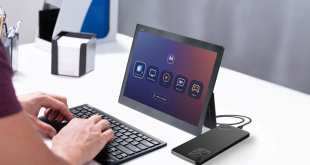Microsoft has reiterated its pledge to make Windows 10 its ‘last operating system‘ by extending the OS’s support lifetime to 2026, but the company has also hidden a new downgrade policy within the Windows 10 Anniversary Update.
With the release last week of Windows 10 Anniversary Update – officially known as 1607 using the year and month – Microsoft refreshed the Windows support lifecycle database to signal a one-year extension to Windows 10 Enterprise.
Enterprise is the only stock-keeping unit (SKU) that comes in a static version that does not change during its lifespan. Dubbed "Long-term Servicing Branch," or LTSB for short, the version is intended for systems for which stability and longevity is key.
The first LTSB build was also the first public release of July 2015, identified as 1507. That version, like others launched then, was guaranteed support until Oct. 14, 2025.
Last week’s 1607 was also designated as an LTSB build.
Microsoft had said it would periodically label new upgrades as LTSB so that corporations could update if they wished. This newest LTSB, based on 1607, will be supported until October 2026 – just over 10 years from its release.
Consumer and small business versions, such as Windows 10 Home and Windows 10 Pro, remain on lifecycles that will end in October 2025, even though they, like Enterprise, were just refreshed with 1607.
This renewed support cycle is not the only news to come out of Microsoft of late however.
As discovered by PC World, Microsoft has quietly hidden a reduced downgrade policy within the Anniversary Update.
With the original build of Windows 10, users were able to install software which would give them 31 days to downgrade, as per the company’s historical traditions. The latest update however reduces that downgrade window to only 10 days.
In an statement made to PC World, a representative from Microsoft stated that “this new 10-day behavior is for all upgrades and updates to the Anniversary Update
“Based on our user research, we noticed most users who choose to go back to a previous version of Windows do it within the first several days. As such, we changed the setting to 10 days to free storage space used by previous copies.”
While users have generally been positive about the changes made by Microsoft, this quiet change to company policy is the latest addition to the list of actions that critics have called deceptive.
It is entirely understandable that Microsoft would want users to be on its latest OS, but the company has done little over the past few years to curry favour from users whether it is with an aggressive upgrade strategy or invasive privacy policies.
This is the latest move from Microsoft that some might call ‘anti-consumer’.
 PCR Tech and IT retail, distribution and vendor news
PCR Tech and IT retail, distribution and vendor news



